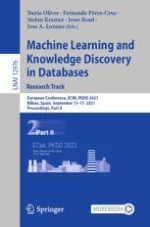The multi-volume set LNAI 12975 until 12979 constitutes the refereed proceedings of the European Conference on Machine Learning and Knowledge Discovery in Databases, ECML PKDD 2021, which was held during September 13-17, 2021. The conference was originally planned to take place in Bilbao, Spain, but changed to an online event due to the COVID-19 pandemic.
The 210 full papers presented in these proceedings were carefully reviewed and selected from a total of 869 submissions.
The volumes are organized in topical sections as follows:
Research Track:
Part I: Online learning; reinforcement learning; time series, streams, and sequence models; transfer and multi-task learning; semi-supervised and few-shot learning; learning algorithms and applications.
Part II: Generative models; algorithms and learning theory; graphs and networks; interpretation, explainability, transparency, safety.
Part III: Generative models; search and optimization; supervised learning; text mining and natural language processing; image processing, computer vision and visual analytics.
Applied Data Science Track:
Part IV: Anomaly detection and malware; spatio-temporal data; e-commerce and finance; healthcare and medical applications (including Covid); mobility and transportation.
Part V: Automating machine learning, optimization, and feature engineering; machine learning based simulations and knowledge discovery; recommender systems and behavior modeling; natural language processing; remote sensing, image and video processing; social media.
